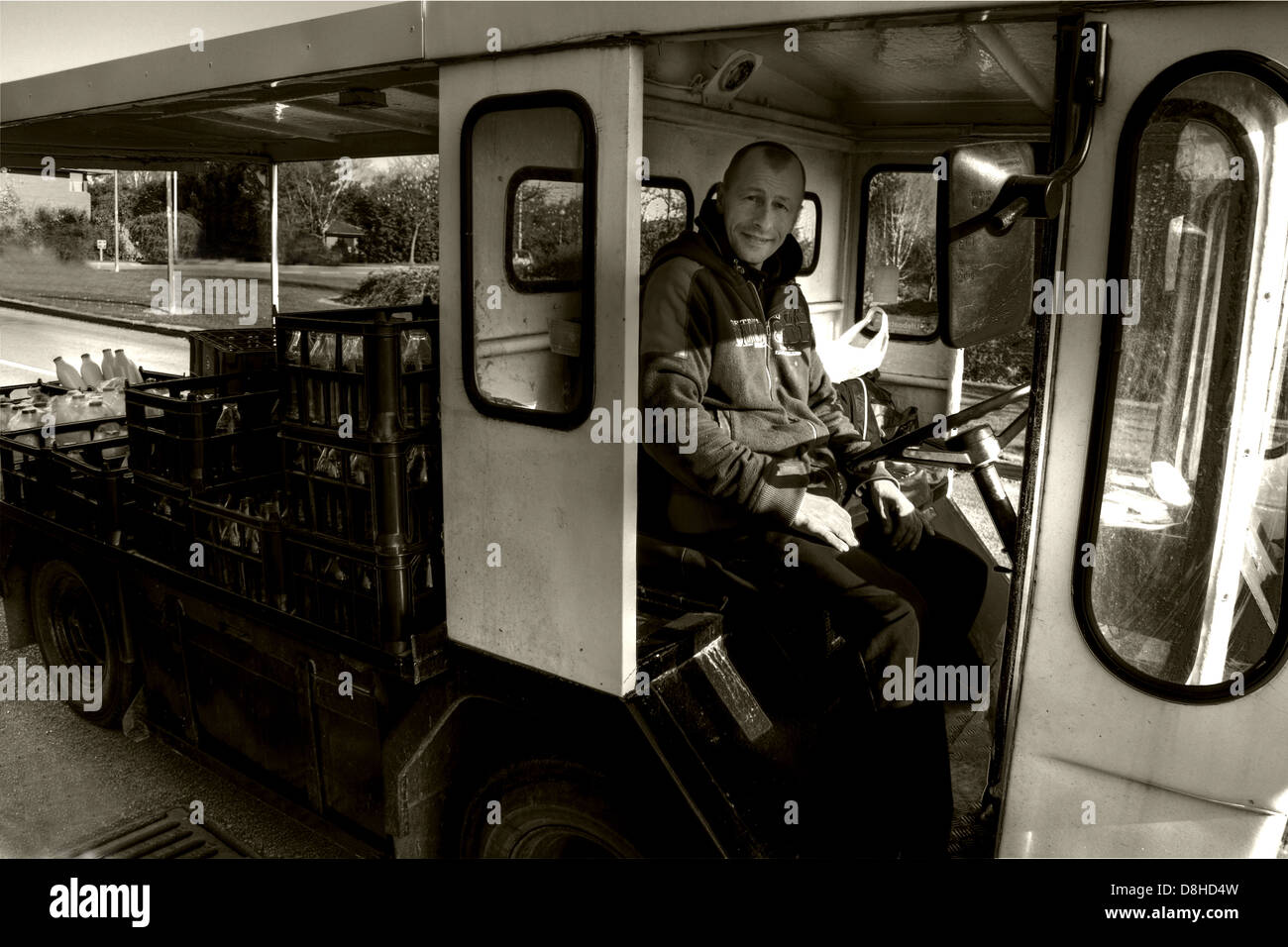A traditional British electric milkfloat vehicle

Image details
Contributor:
Tony Smith / Alamy Stock PhotoImage ID:
D8HD4WFile size:
60.2 MB (2.2 MB Compressed download)Releases:
Model - no | Property - noDo I need a release?Dimensions:
5616 x 3744 px | 47.5 x 31.7 cm | 18.7 x 12.5 inches | 300dpiDate taken:
21 April 2010Location:
Northwich, Cheshire, England, UKMore information:
A traditional British electric milkfloat vehicle Milk deliveries frequently occur in the morning and it is not uncommon for milkmen to deliver products other than milk such as eggs, cream, cheese, butter, yogurt or soft drinks. Originally, milk needed to be delivered to houses daily since the lack of good refrigeration meant it would quickly spoil. The near-ubiquity of refrigerators in homes in the developed world, as well as improved packaging, has decreased the need for frequent milk delivery over the past half-century and made the trade shrink in many localities sometimes to just 3 days a week and disappear totally in others. Additionally, milk delivery incurs a small cost on the price of dairy products that is increasingly difficult to justify and leaves delivered milk in a position where it is vulnerable to theft. Because of the relatively small power output from its electric motor, a milk float travels fairly slowly, usually around 10 to 16 miles per hour (16 to 26 km/h) although some have been modified to do up to 80 mph (130 km/h). Operators often exit their vehicle before they have completely stopped to speed up deliveries; milk floats generally have sliding doors that can be left open when moving, or may have no doors at all. They are very quiet, suiting operations in residential areas during the early hours of the morning or during the night.